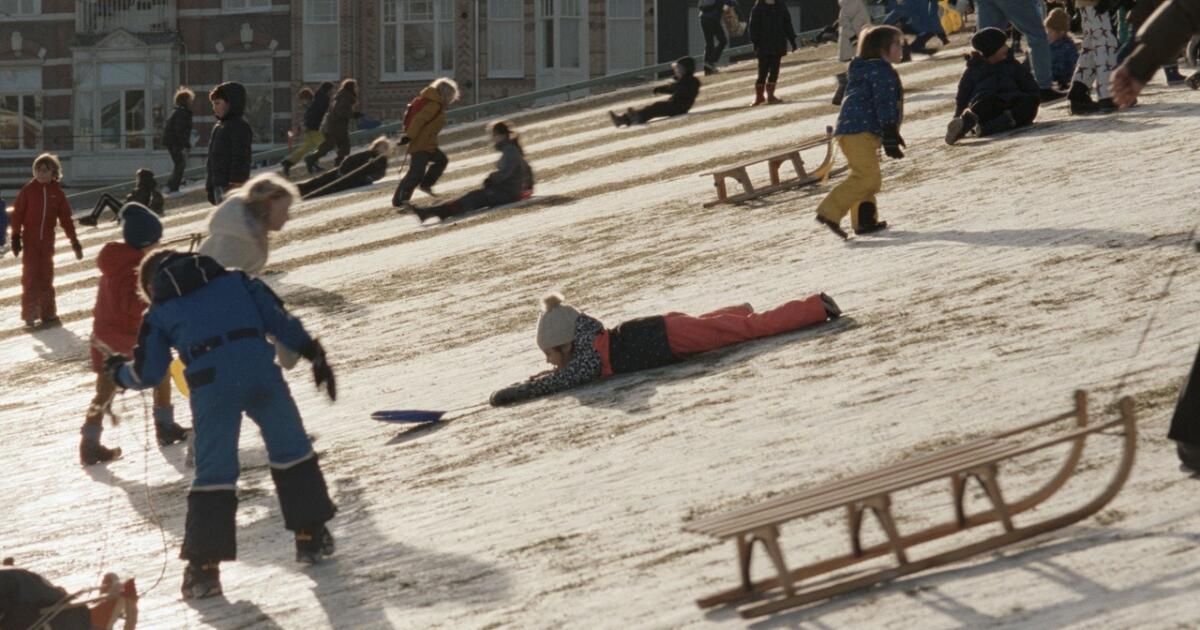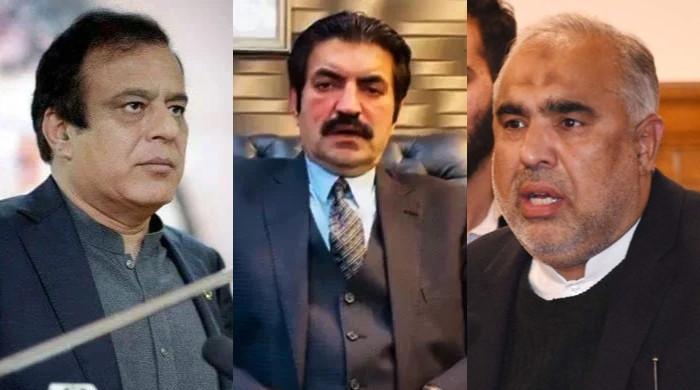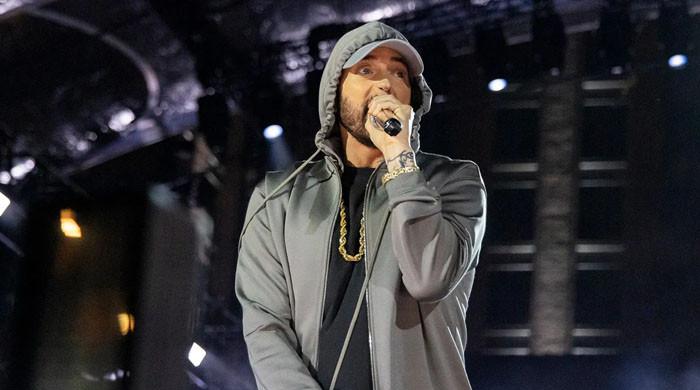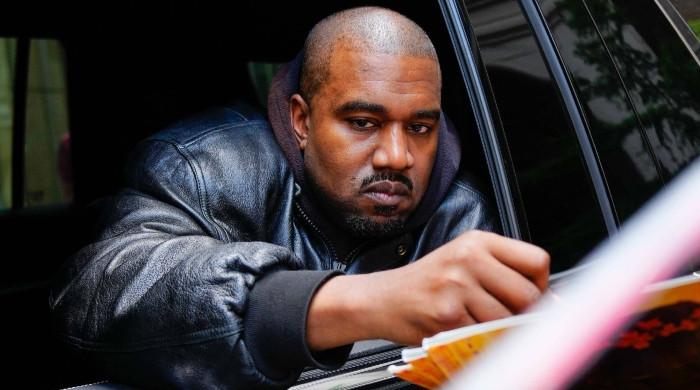One of the many stories we hear in “Occupied City,” Steve McQueen’s quietly astonishing new documentary, charts the fate of an Amsterdam arts establishment during the German occupation. In 1941, the Hollandsche Schouwburg, or Dutch Theatre, was renamed Joodse Schouwburg, or Jewish Theatre; Only Jewish artists were allowed to perform there, and only for a Jewish audience. In 1942, the Nazis turned it into a deportation center and prison from where thousands of Dutch Jews were sent to the Westerbork transit camp, and then to their deaths in extermination centers, including Auschwitz and Sobibor.
All of this is explained in a calm, lucid narration by English actress Melanie Hyams, who, here and elsewhere, begins with one place and then branches out into a series of succinct but richly detailed digressions. She tells us about the average detention time in the theater, about the Jews who jumped from a balcony to their death. But she also tells us about the daring escapes that took place and the Jewish resisters who at one point tried to burn down the theater. With patience and great determination, Hyams explains how an institution built in the 19th century became a makeshift ghetto, a site of mass murder, a site of uprising and, finally, under the auspices of the Jewish Historical Museum, a lasting memorial. .
The “Occupied City” is also a kind of memorial, like Amsterdam itself, an idea that McQueen and his main collaborator, the Dutch writer and filmmaker Bianca Stigter (“Three Minutes: An Elongation”), emphasize in every frame. . For 4 and a half densely packed and engrossing hours (including a 15-minute intermission), they take us on a visual tour of today’s city, guiding us through streets, bridges, parks and homes, restaurants and offices. and discos. (McQueen and Stigter, who are married, make their home in Amsterdam.) The film is structured not chronologically or even thematically, but geographically; We are introduced to each of the film’s 130 locations with an exact address, followed by a verbal account of what is known to have happened to the Jews who once lived, worked, or played there. He often points out that the building in question was “demolished,” a word we are left with to refer to the terrible truths hidden beneath the foundations and facades of the modern metropolis.
An image from the documentary “Occupied City”.
(A24)
Crucially, and with a restraint that grows in power as the film progresses, McQueen never shows us archival footage from the 1940s or historical reenactments. Instead, he relies entirely on Hyams’ narration to take us into the past, a formal choice that underscores how tenuous and even invisible our connections to that past can be. It takes a lot of attention to perceive those connections, and “Occupied City,” beautifully shot (by Lennert Hillege) and artfully edited (by Xander Nijsten), relies on a striking disjunction between then and now, and between sound and image. You want to let this movie wash over you, enjoying the lovely everyday moments of smiling pedestrians, happy revelers and children running and laughing. But you’ll also want to put these scenes aside and lean forward in your seat, to give the individual tragedies being told the time and attention they deserve.
But the film doesn’t linger, and Hyams’ relentless narration, drawn from Stigter’s 2019 book “Atlas of an Occupied City (Amsterdam 1940-1945),” moves with a liveliness that conveys scope without sacrificing gravity. The aesthetic tension that McQueen sustains here, far from taking you out of the film, is extraordinarily productive. The contrasts can border on the surreal: it is shocking to see what has become of an old Jewish ice cream parlor, or to see the bride and groom posing for photographs in what was once a hospital for Dutch soldiers. At one point, the camera lingers on an event that highlights the stories of black descendants of Aruba, Curaçao, and Suriname, an instructive reminder that the Netherlands has been both the occupier and the occupied.
Sometimes the links are more subtly intuitive. Through simple shots of an outdoor cafe, the narrator describes the food shortages that devastated Amsterdam during the so-called Hunger Winter of 1944, a tragedy to which she continues to return. And then there are the newly shot images of children playing in class, which provide a devastating counterpoint to Hyams’ account of the schools where Jewish children were segregated during the occupation. The size of those classes steadily decreased until the schools finally closed in 1943, the year the last Dutch Jews were deported and the Nazis triumphantly declared Amsterdam “Jew-free.”
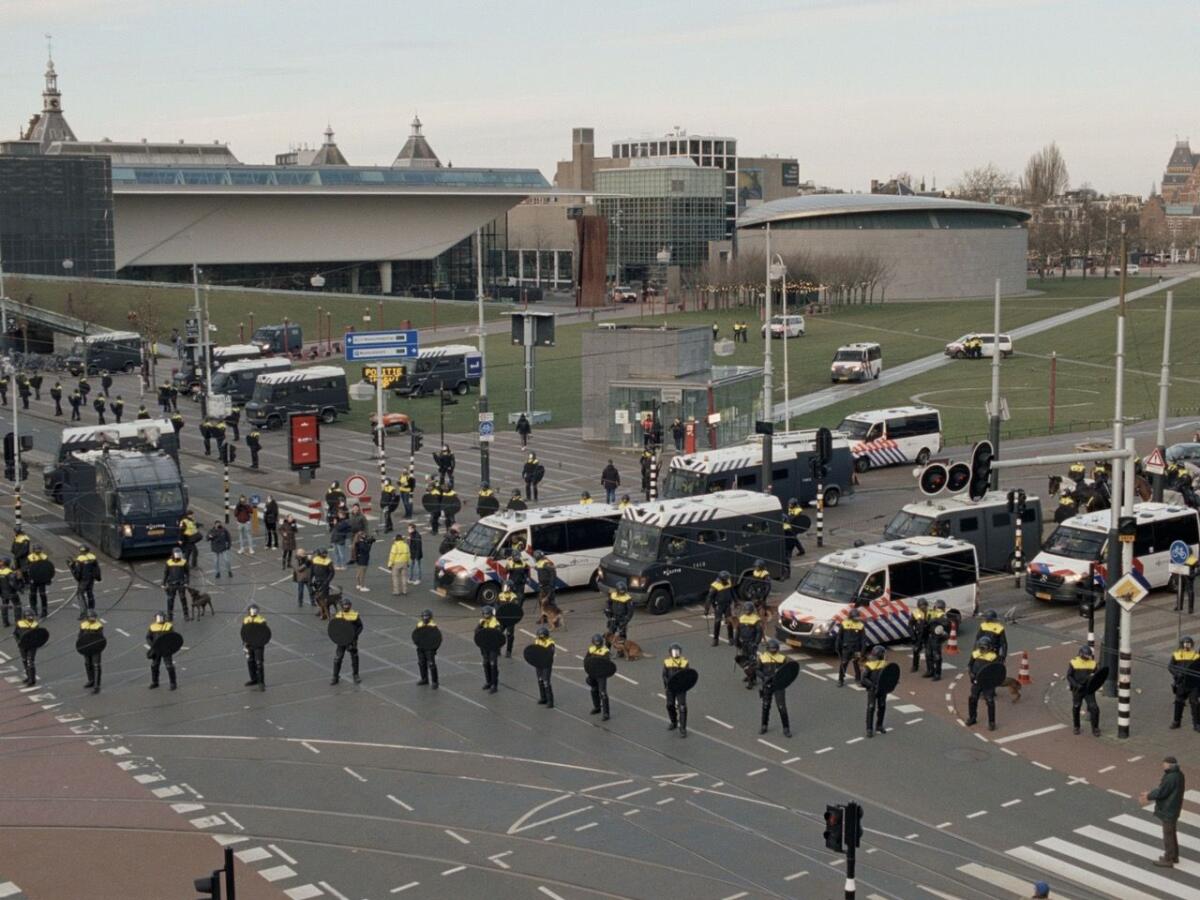
An image from the documentary “Occupied City”.
(A24)
If all this sounds dangerously abstract, the effect is precisely the opposite. The achievement of “Occupied City” is to give texture, definition and specificity to events that have too often been glossed over in the movies, with their broad brushstrokes and shorthand atrocities. It is common to describe such events as indescribable or unimaginable, a cliché that McQueen rejects as forcefully here as he did in his 2013 drama “12 Years a Slave.” That film represented everything that “Occupied City” hides, but the result of both films is a sense that history has been firmly and powerfully confronted. For those willing to watch and listen, the worst can be said, imagined and, on some level, understood.
In “Occupied City,” McQueen reminds us that the Nazi death machine was an apparatus in which noisy bureaucratic banality collided with startlingly imaginative cruelty. You may not flinch when you hear, for the umpteenth time, talk of a round of mass executions, but one throwaway line hits you in the gut: “The wives of the executed could pick up their wedding rings here the next day.” The film has an especially keen ear for less-reported tragedies: the boy who was shot to death because he was caught outside two minutes after curfew; the jogger who was arrested and deported because he forgot that Jews were banned from a particular park; Desperate residents were killed for cutting down trees to use as firewood during the long, cold, exhausting winter of famine.
But if “Occupied City” is an account of barbarism in a country that saw approximately 75% of its Jewish population murdered during the Holocaust, it is also, poignantly, a chronicle of mass resistance. Street after nondescript-looking street bears testimony to the courage of those Dutch residents who risked their lives: the many men and women who sheltered Jews in boarding houses and secret rooms. Inevitably, the film touches on Anne Frank, although not as often as one might expect. It’s as if McQueen and Stigter didn’t want the Holocaust’s most iconic victim to overshadow the countless others who suffered in relative anonymity.
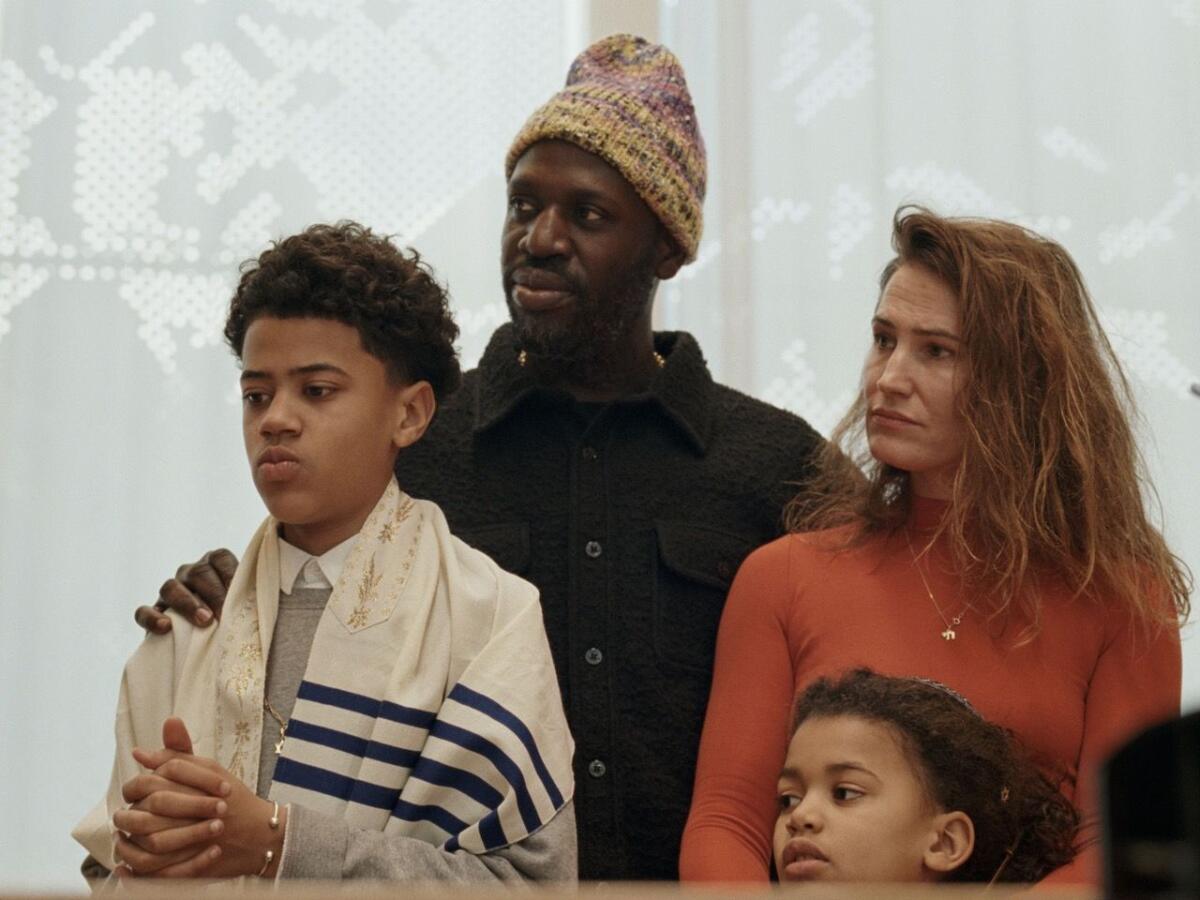
A family in an Amsterdam synagogue in an image from the documentary “Occupied City.”
(A24)
If resistance is one of the film’s key themes, it’s willing to push that theme to sometimes provocative ends. McQueen began filming in 2019 and much of the footage was filmed during the first COVID-19 outbreak, a context that makes for some uncomfortable juxtapositions. When I first saw “Occupied City,” shortly before its Cannes premiere last May, I initially wondered if McQueen was making a glib comparison between Jewish resisters during World War II and a group of unmasked protesters we see gathering during the first days of World War II. the pandemic. A haunting sequence of an eerily depopulated Amsterdam at night, accompanied by Oliver Coates’ haunting score, couldn’t compare Nazi-imposed curfews to COVID lockdown restrictions, could it?
But long before the movie ended, I concluded that it wasn’t, and not just because McQueen’s interest in the pandemic (he soon shows us Amsterdam residents receiving their first COVID vaccines) seems more observational than analytical. . In general, he is fascinated by images of people gathering to protest, whether a crowd gathered at an anti-fascist demonstration or a group of activists waving Palestinian flags in Dam Square, a site of enormous historical importance: Here, Hyams tells us, two days After the Nazis surrendered in 1945, German soldiers fired on a crowd of Dutch revelers celebrating what they thought was the end.
What “Occupied City” leaves us with, in these moments when the past leans toward the present, is the realization that to gather in public, for any reason, is to practice a social freedom that was hard-won and nearly destroyed. To that end, McQueen and Stigter have not only excavated a not-so-ancient history; They have also made a masterful and haunting tribute to a city they clearly love.
‘Occupied city’
(In English and Dutch with English dialogue)
Classification: PG-13, for thematic material, strong language and sexual material, smoking and brief drug use.
Execution time: 4 hours, 30 minutes
Playing: It begins Friday at Landmark’s Nuart Theater in West Los Angeles.

